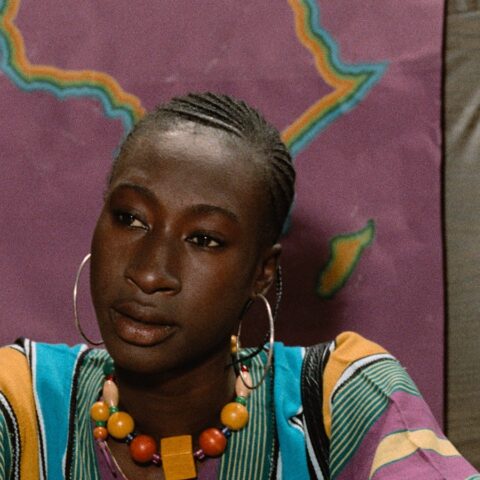THE BIGOT RETURNS TO ‘AFRICA’
By Juanita Cox
Saturday, January 29, 2011.
V.S. Naipaul’s search for the core of African belief starts in Uganda, a country he had visited forty-two years earlier in 1966. During his first trip to Uganda and on his own admission, he had paid less attention to Africa than he should have done. Most of his leisure time was spend in a Botanical Garden close to Lake Victoria, a legacy of British colonialism and haven for Naipaul from the surrounding ‘wildness’. Despite the probing nature of this second trip, Naipaul concedes that an understanding of Uganda continued to elude him. This too can be said of the other African countries he subsequently visits: Nigeria, Ghana, Ivory Coast, Gabon and South Africa.
The overriding problem for most readers will be that African civilisation is subtextually measured against the ‘superior’ European values that Naipaul subscribes to. When Naipaul meets the Etonian son of an Ashanti interviewee, he believes it might be possible for this boy to ‘have a [more] steady way of looking and acting’ than his father. On similar lines Naipaul prefers a Frenchman’s re-enactment of an initiation ceremony in Gabon to an authentic dance performed at a chief’s hall: the former said to be more ‘metropolitan’, accomplished in style and finish. On another occasion, when a local chief offers a spread of food that meets Naipaul’s approval, he describes it as ‘metropolitan entertainment’ that had presumably been instigated by an American companion. Even his admiration of the Baganda people of Uganda is expressed in terms of their Roman-straight roads.
But this would hardly seem worth mentioning were it not for the frequency of Naipaul’s more questionable attitudes toward race (in its biologically deterministic sense). Richmond, a Ghanaian who explains that ‘reason is limited by setting’, is said to have the ‘gift of analytical thought’, thanks to a distant Danish ancestor, whilst Rossatanga-Rignault became a believer in ‘the magic of the [Gabonese] forest’ despite his Paris education and mixed French-African ancestry. In the final chapter of the book, Naipaul describes South African workers with shiny black skin as ‘exotic’ figures that on first impression barely fit into the industrialised landscape. By the time he claims that Gandhi had ‘trouble with Africans’ and ‘found it hard to see them’ despite twenty years in South Africa, we know that Naipaul shares these sentiments.
From the outset it is evident (with some justification) that Naipaul fears being duped by local guides, chiefs and witchdoctors into parting with his money, whilst he in turn enjoys making private mockery of them. He asks a Nigerian babalawo, for instance, if his daughter will get married and is advised that evil spirits preventing her from doing so can be banished (presumably at further expense). Naipaul who in reality has no children delights in confounding the babalawo by claiming he has no desire for his daughter to marry. Since stories about fake diviners are universal, most readers will be feel able to chuckle at this subterfuge but may at the same time question the genuineness of Naipaul’s mission.
Permeating the narrative is Naipaul’s compassion for animals. Understandably given some of the scenarios, he reveals a disdain for those who treat them cruelly but like much of the text, this too is laced with racial stereotypes and prejudice. When told that wild animals in Ghana are being eaten to the point of extinction – along with cats (in the south) and dogs (in the north) – Naipaul regrets their inability to escape ‘these idle fellows’. On discovering that cats are similarly eaten in Ivory Coast, after first being put in a sack that is dropped into a pot of boiling water he admits it made ‘everything else in the country seem unimportant’. Cattle awaiting slaughter are ‘noble creatures’, whilst the ‘simple people’ who witness these daily cruelties can have ‘no idea of humanity, no idea of grandeur’.
The Masque of Africa nevertheless contains some discomfiting truths. An underlying belief in evil spirits, witchcraft and fetishes is variously potent in Africa and patently continues to inculcate suspicion and/or fear at one end of the spectrum, whilst provoking acts of horrific violence at the other. This book, given Naipaul’s willingness to confront issues others would prefer to ignore, had the potential to be an insightful introduction to Africa’s traditional belief-systems: its practice and impact on the shaping of African societies. However in lacking investigative rigour and condescending in tone, Naipaul’s way of seeing appears instead to echo that of the nineteenth-century travel writer he himself describes as ‘suspect’ and on the ‘look-out’ for sensationalist material. The most compelling ‘glimpses’ are thus into Naipaul’s psyche, his prejudices and his fears.Juanita Cox is writing a PhD thesis in Caribbean literature at the
University of Birmingham. Her publications include ‘Edgar Mittelholzer:
A Caribbean Voice’ (Parts 1 & 2 in the Stabroek News & Guyana
Review, May 2008) and the introductions to recently republished
editions of the Mittelholzer novels: ‘Corentyne Thunder’ (2009), and
‘The Life and Death of Sylvia’ (2010). Future publications include a
critical anthology: In the Eye of the Storm: Edgar Mittelholzer
(1909-1965).
�
Send to a friend | �
View/Hide Comments (0) | �



